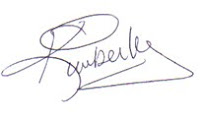Wow... what a year! With 2009 drawing to a close, I am sure, like everyone in the industry you're looking to 2010 with anxious eyes.
Rather than drone on and on about what you need to be doing to be successful in the upcoming year, let’s take a well-earned pause... sit back… have a virtual cocktail together (clink)… and toast ourselves that we made it through the year. Just making it is an accomplishment.
We’ve seen long-time friends and associates become victims of the economy. We’ve watched pillars of the industry shudder. Some of us are more bumped and bruised than others. But, we are a little older, a little wiser, and, as much as it doesn’t feel like it, our businesses are going to be stronger for it.
To look positively, we’ve learned creative ways to keep things going, techniques and approaches that, in a good economy, we never would have thought of. How much is that benefiting our businesses now and will be long into the future?
So, in looking at 2010… let’s apply the three P’s… Positive… Productive… and Patient. Or, to borrow from the slogan used in Great Britian during WWII, “Keep Calm and Carry On.” :-D
Cheers (clink)… one thing is for certain, 2010 is going to be an exciting year!
Happy Holidays!
--Kimberly
and everyone on the team at R2 Photography, LLC
www.r2-photography.com














